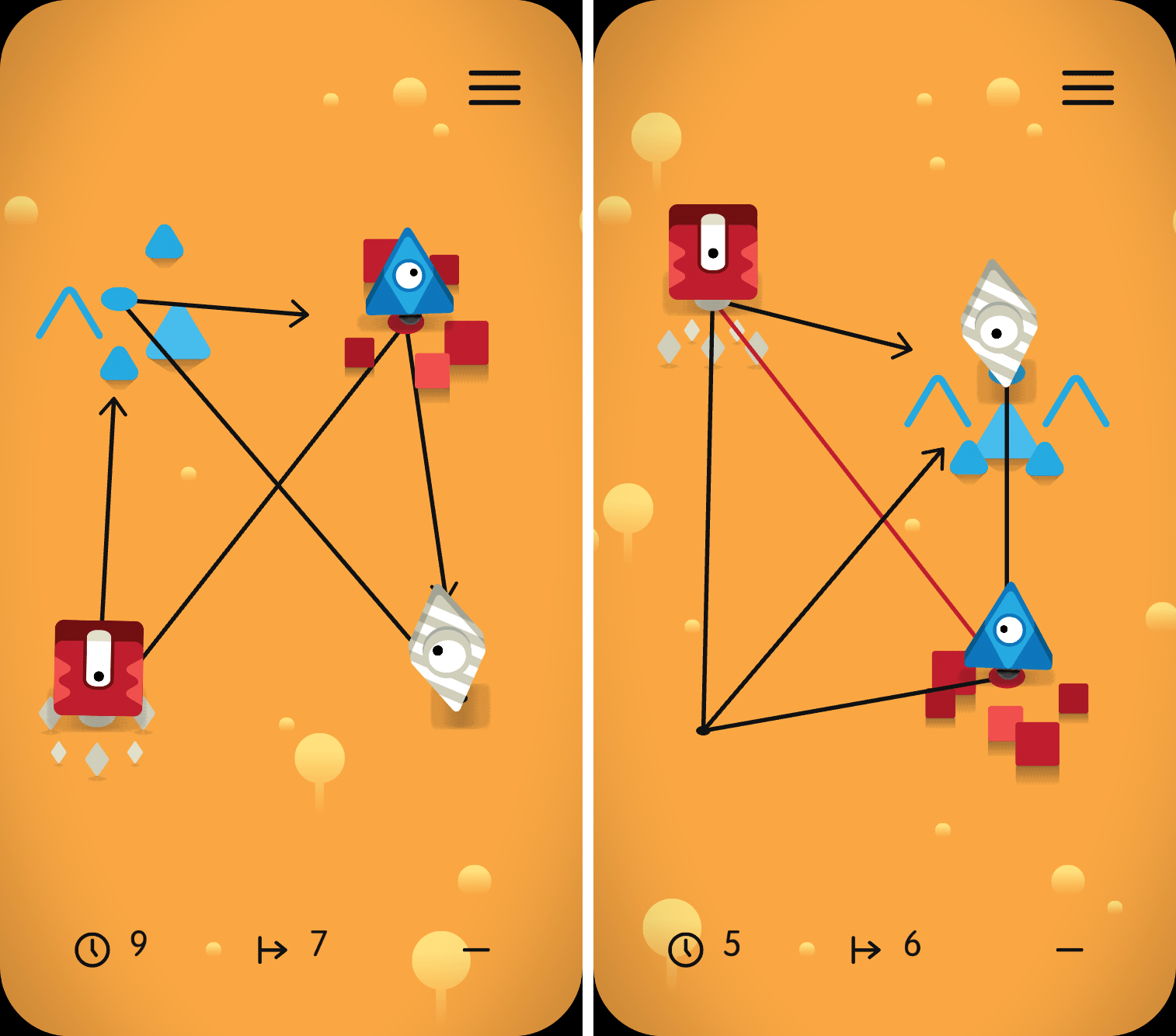I’m going to let you in on a couple prevailing facts about Sputnik Eyes, a “homemade” game by Shelly Alon.
The first is that the story, at least in my eyes, makes little sense. It includes – but is not limited to – robots, space, planets, constellations, exploration, Earth, scorpions, hearts, and a rocket ship. It’s a hodgepodge of an idea, one that I immediately misunderstood and hardly plays any role in the overall game.
But the second fact is that Sputnik Eyes is one of the most enjoyable puzzle games I’ve played in a while, and one I can’t seem to stop playing. Equal parts charming and challenging, Sputnik Eyes feels exactly like what a puzzler should in 2017: clean, fun, and to the point.
Move Along, Robot Friend
When you start a level of Sputnik Eyes, you’ll find yourself accompanied by a grid and your robot pals. Each stage has a unique pattern, a series of connected lines that form points, sat on by the bots of varying colors. Take a look at the examples below:
Effectively, Sputnik Eyes is a matching game, one that requires you to pair the robot to its respective colored spot on the map. While it sounds easy in theory, the game throws interesting obstacles in your way, like one-way lines and paths that can only be traveled by a certain color. The more you play, the more complex Sputnik Eyes becomes; eventually, each puzzle seems more crowded than the one before it.
From there, the game can be played in a variety of ways. At the most basic level, you only need to complete the level to move on. However, finish the level in a limited set of moves or within the time period and you’ll receive badges signifying your accomplishments. Although badges have no in-game value, they’re a completionist’s symbol of pride.
Carefully Crafted, Wonderfully Executed
I normally like to weave in comments about a game’s design into a review, but much of what makes Sputnik Eyes so endearing is some of its aesthetic choices. One of the best examples is the game’s framing – instead of the game taking up the full screen, it rounds off its corners to give it a distinct look.
Throughout the gameplay and menu navigation, you’ll see carefully crafted animations, character models, and level designs. Motion is utilized exceptionally in Sputnik Eyes, adding touches that make the atmosphere more alive and vivid. And behind it all lies a soundtrack that shifts between ambient and thought-provoking, unafraid to take your attention but simple enough to fade into the background when you’re thinking hard about a puzzle.
All of this is to say that Sputnik Eyes feels created in a way that makes you, the player, feel cared for. When playing, I felt like each piece of the game was built for me to notice, appreciate, and consider as part of the overall experience.
Conclusion
$1.99 and many levels later, I’m thrilled by Sputnik Eyes. Had it been in the earlier days of the App Store, I think it’d be considered a touchstone of the puzzle genre; now, despite the App Store’s continuous growth in its biggest category, Sputnik Eyes still stands out as a must-have for puzzle fans.
If you’d like to pick up Sputnik Eyes, you can do so for $1.99 in the App Store (Universal).



